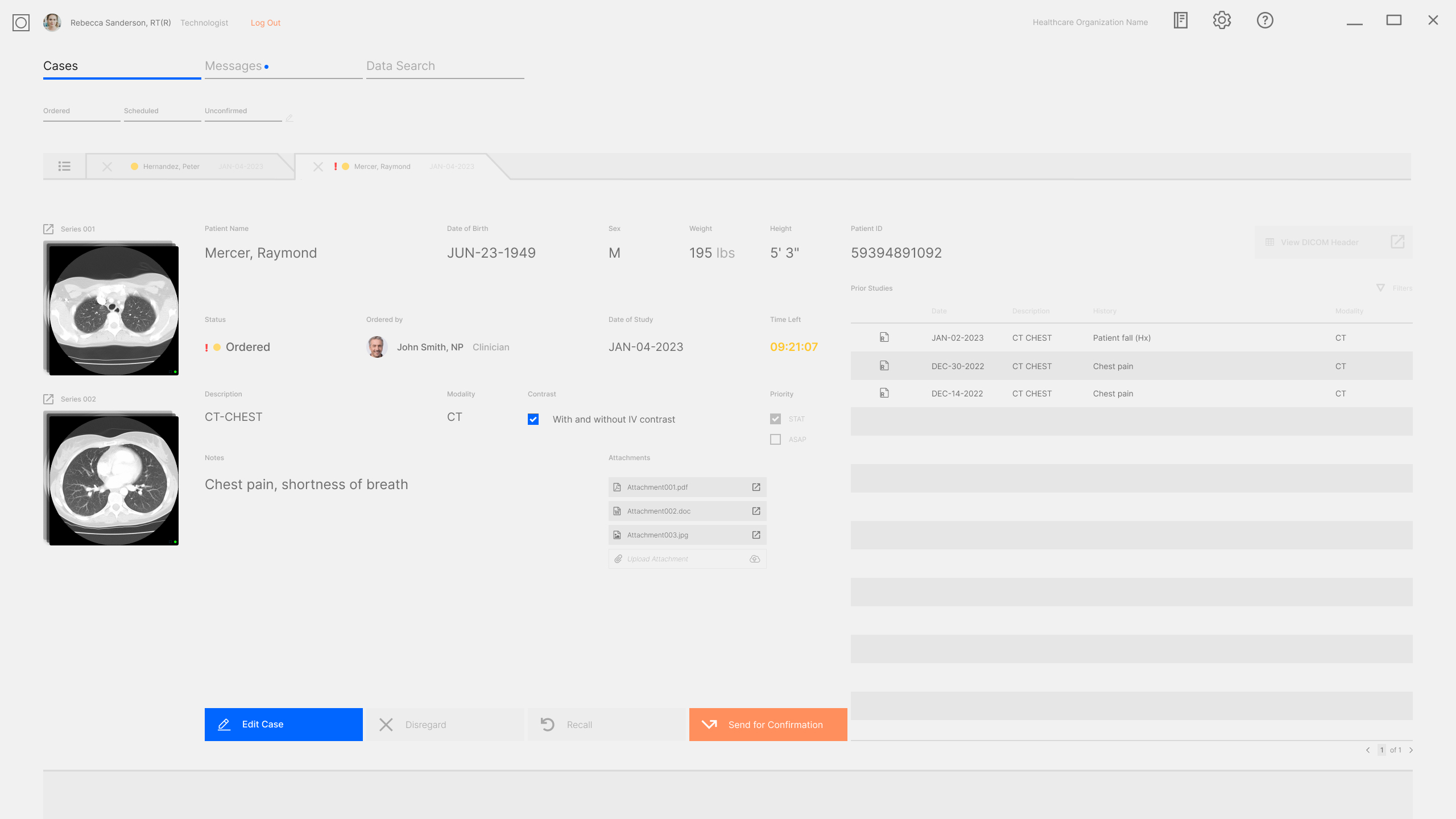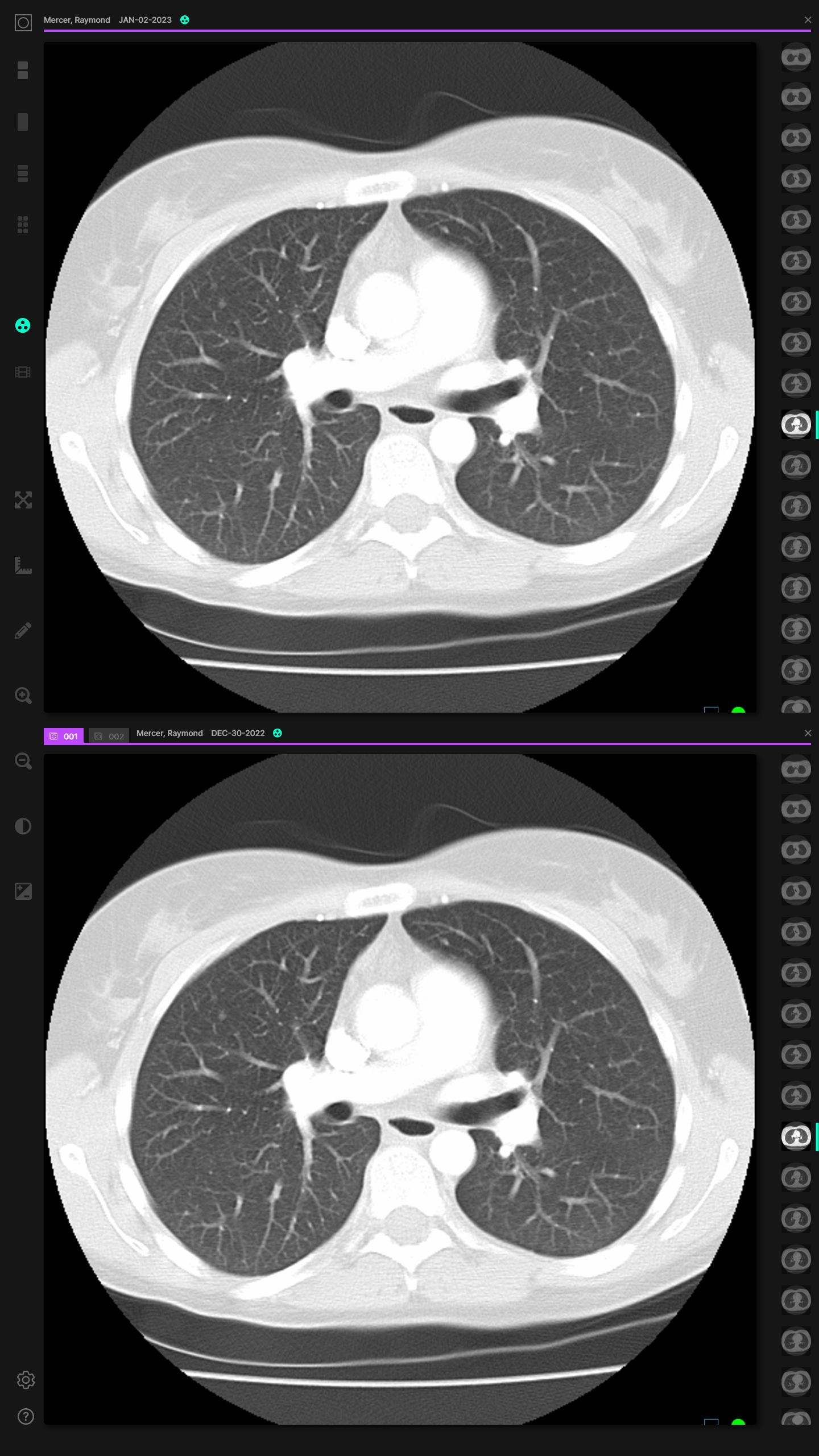Röntgen RIS/PACS System
Concept / UX Design
Overview
Röntgen is an ergonomic, lightweight, secure RIS/PACS solution conceived from the ground up for more efficient and accurate patient care. Confronted with monolithic commercial RIS/PACS systems that prioritize feature saturation and market exclusivity over end user experience and open-ended clarity, Röntgen aims to simplify and unify the radiology workflow to give providers a system that works for them and their patients.
Any data type relative to diagnostic imaging streams quickly and securely through the Röntgen ecosystem, keeping patient information immediately accessible for providers, but also safe and locked down, without any patient data ever stored locally on client workstations running Reading Room or Portal.
Röntgen is built upon intelligent data acquisition, interpretation, and storage. Healthcare providers are able to see the same information within the same interface, and not worry about translating between platforms from different vendors, or making sure disparate, separate systems talk to each other correctly.
Dual Interface, One System
Röntgen exists as a single system with two interfaces working in congruence. Portal and Reading Room are two sides of the same coin, showing the same worklist and database, but serving the differing needs of on-site clinicians and the radiologist interpreting the study.
Röntgen Portal is a turnkey application that allows providers at point-of-care the ability to manage patient and image data. It is a single platform with modular functionality based on specific user roles. Technologists are able to ingest images from their modalities, referring physicians are able to view cases and read reports, and administrators are able to manage workloads and user permissions, all under the same application umbrella without jumping between platforms.
In Clinician View, clinicians are able to view and edit patient information, case-specific data, quickly reference prior studies, and confirm studies to indicate to the radiologist that a study is ready to read.
In Technologists View, Röntgen allows technologists to focus on patient care and performing the exam, rather than data entry and management, by talking with the modality and automatically making sure it has the most up-to-date information about the study.
Röntgen Reading Room is a radiologist viewing interface that works seamlessly with both on-site radiology departments and teleradiology networks to give radiologists anywhere an ergonomic and efficient reading room environment designed specifically for their needs.
Reading Room allows multiple radiologists to be within the same study database while having their own worklists managed either by administrators, or by custom worklist parameters they can set up themselves. Radiologists can have multiple worklists organized by modality, status, time-to-read, etc., all easily navigable and fast-loading thanks to Röntgen's highly efficient backend cloud infrastructure.
Radiologists can select a study, have the images open on their secondary monitors, and immediately begin reading and dictating, without any additional steps, saving time and efficiency. They can review full previews of priors, and also instantaneously open images from previous exams for comparison. Röntgen is designed to be seamlessly integrated with industry-leading medical VR technologies Dragon One or PowerScribe 360, running as part of Röntgen's streaming cloud infrastructure, eliminating the need for external plugins or windows running dictation software.
Designed to fully utilize the 8K HDR Röntgen Reading Room display product, the Reading Room viewers render diagnostic imaging with carefully calibrated brightness and contrast, and powerful layout and comparison tools.
Advanced Specialty Hardware
For the radiologist running Reading Room, Röntgen utilizes custom, purpose-built hardware solutions to maximize radiologist productivity and ergonomics.
The Röntgen M1 is a 32" 8K HDR display configurable with an onboard, powerful, graphics-centric Windows PC, and is a breakthrough in diagnostic imaging hardware. When paired with the modular, multi-use Rontgen P1 Controls, radiologists are given unprecedented levels of efficiency and ergonomics in their reading room.
The Röntgen M1 is available in two configurations: the standard M1 unit is a standalone 32" 8K HDR display for use as a secondary or tertiary monitor, and can be upgraded to a display with an onboard, powerful, graphics-centric Windows PC. The PC on a single M1 can output to up to three additional M1 displays. The M1 is designed with pure functionality and performance in mind, and allows radiology departments to create powerful, flexible workstations for their providers.
The Röntgen P1 Controls are a series of analog-inspired human-computer interface devices specifically designed for the radiologist reading room. Each pad can be daisy-chained with another, allowing multiple configurations, and OLED micro-screens behind each button can be customized and configured within Röntgen Reading Room to fit each individual radiologist's unique reading process. The P1 Controls offer an ergonomic and efficient alternative to cumbersome and slow keyboard and mouse interactions.
(c) 2025 Joseph Donovan Design













